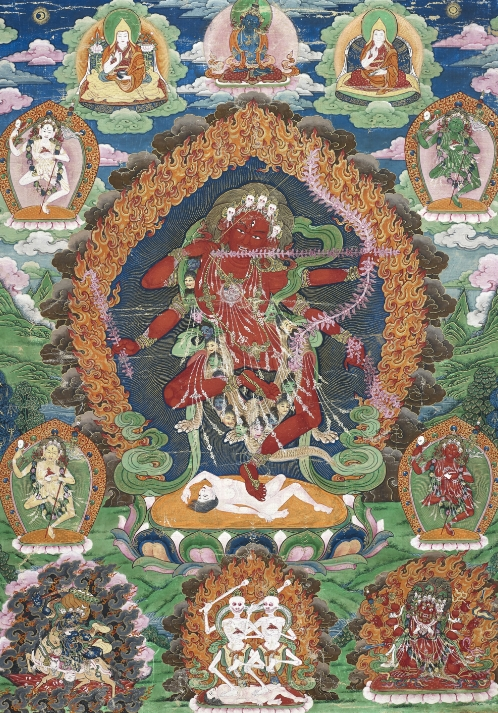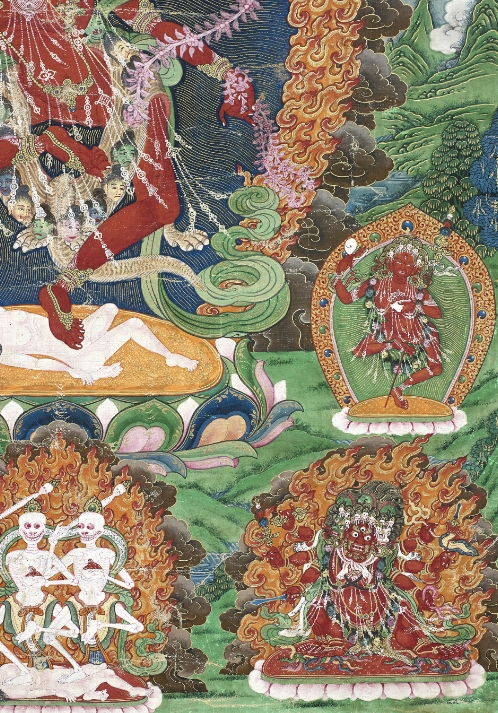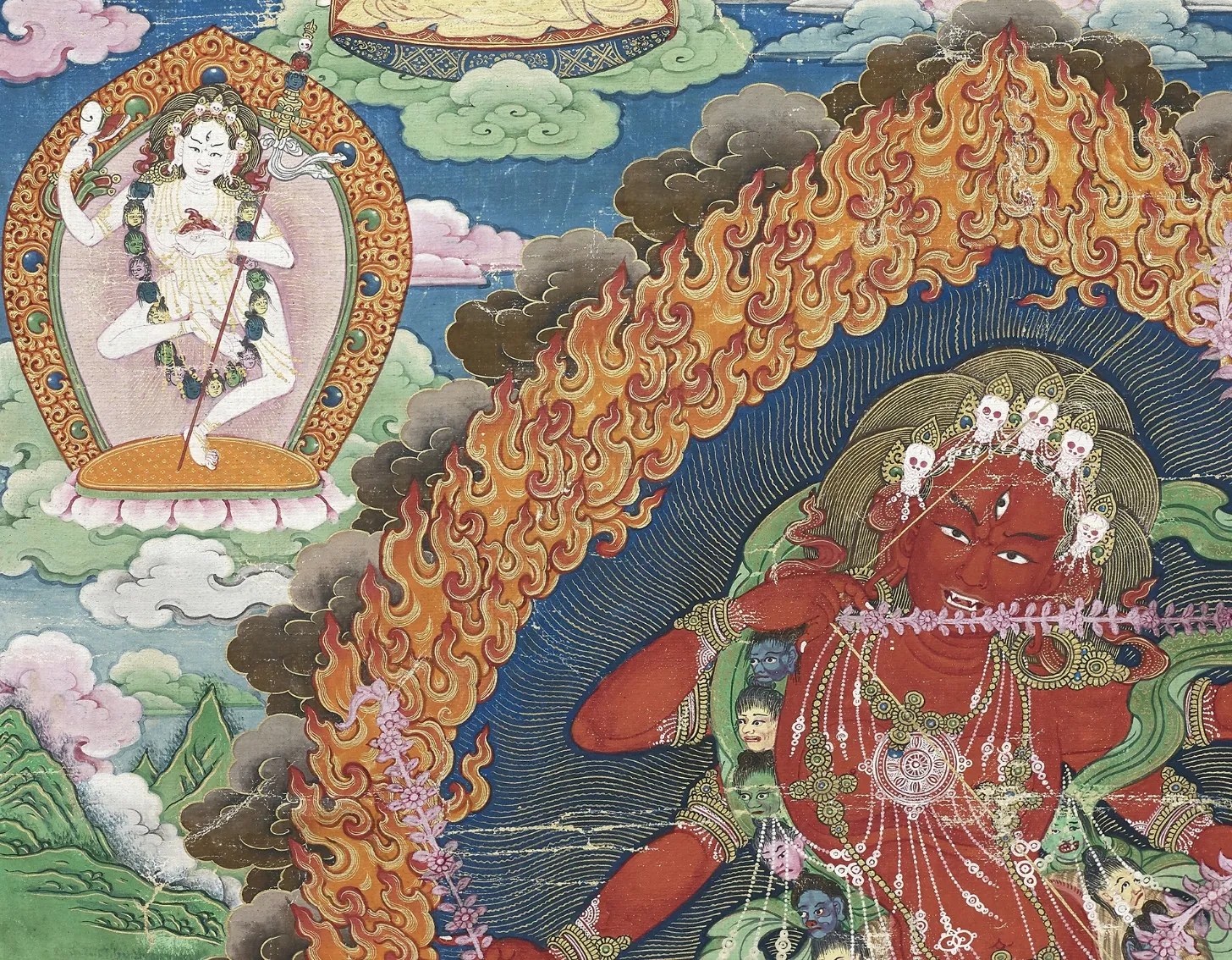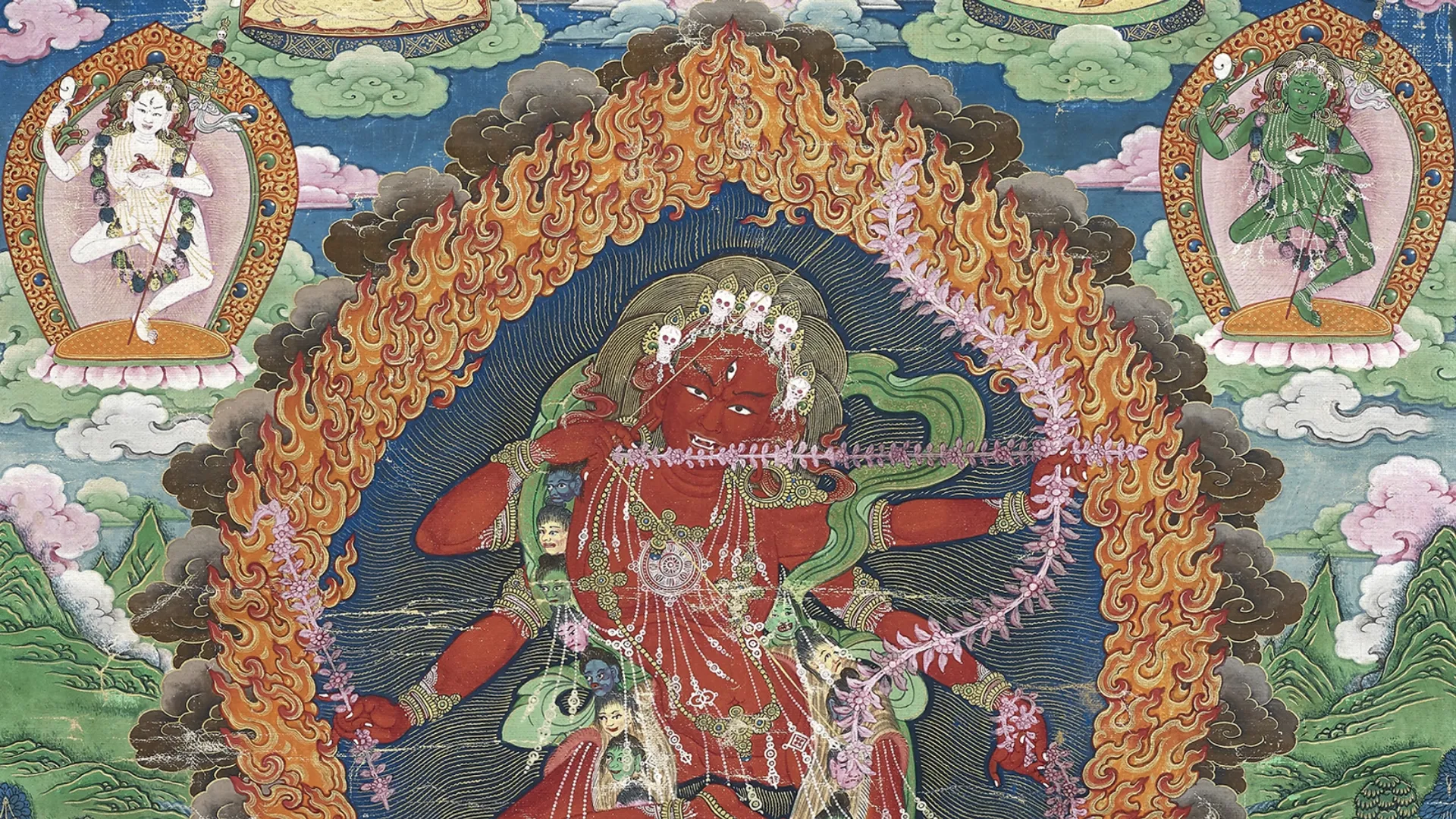With silks: 87 x 59.5 cm
Kurukulla, a Buddhist deity who likely had origins in village magic, is the subject of a fine c. 18th century painting in the collection (cat. no. 23). The ruby-red four-armed deity dances on the body of the Hindu god Rahu, while holding implements made of pink flowers—a bow and arrow, and a hook and noose Her mantra appears in the Hevajra Tantra (c. late 8th-10th centuries) and a tantric text associated with her practice was translated into Tibetan by a disciple of Atisha (982-1054). In some ritual contexts, Kurukulla is associated with Tara, the Buddhist goddess of compassion.
The painting may have been associated with the Yonghegong monastery in Beijing, as its style closely resembles that in paintings currently in the monastery collection. In 1744, the Qianlong emperor asked his chief Buddhist advisor, Rolpe Dorje (1717-1786), to convert the once princely residence of the Yongzheng emperor (r. 1722-35) into a Buddhist temple. Tibetan monks and doctors were sent to assist with the completion of the newly created temple, along with six Nepalese artists.


Elements of style in the painting that also appear in many paintings in the Yonghegong monastery collection include mint green and blush pink clouds, dense landscape formations of green peaked hills with accents of blue, and mushroom-brown clouds that enclose flaming halos, which in turn enclose colored gems. Furthermore, the composition relies on a well-defined foreground, mid-ground, and far-ground. Similarities can also be seen in paintings produced during the Qianlong period (1736-96). A great patron of art with a special appreciation for Tibetan paintings, the Qianlong emperor commissioned a series of paintings for the Xumifushou Temple, constructed between 1779 and 1780 in honor of the impending visit of the Panchen Lama. Three paintings in the Asian Art Museum of San Francisco were made for specific sites in the Xumifushou Temple, and these share elements of style with the Kurukulla painting in cat. no. 23 — particularly the palate.

